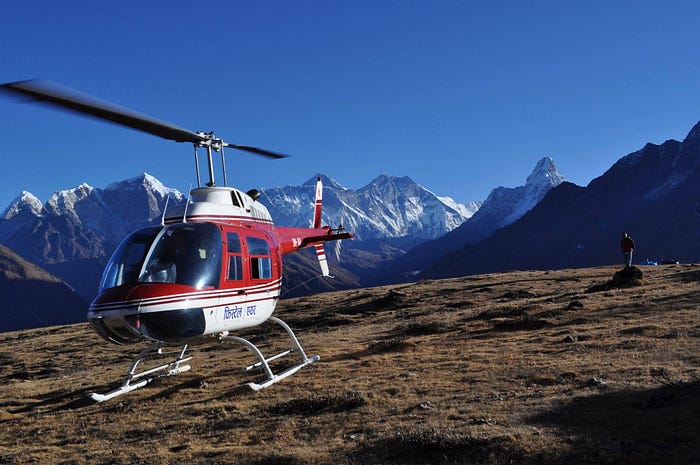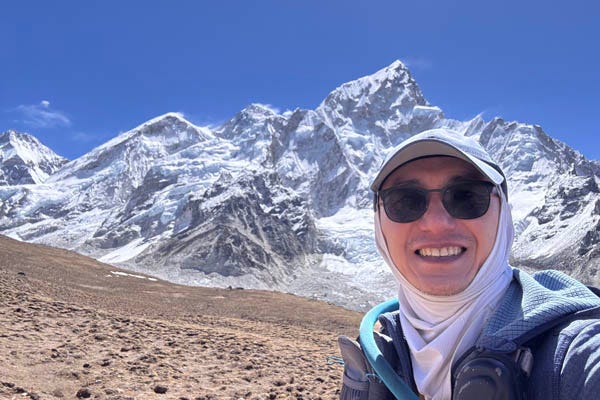The Everest Base Camp (EBC) Trek is one of the most iconic adventures in the world — a journey through the heart of the Khumbu region, past ancient monasteries, Sherpa villages, and towering Himalayan peaks. Traditionally, this trek takes 12–14 days to complete, involving a challenging but rewarding hike to Everest Base Camp and back.

However, in recent years, a popular alternative has emerged: trekking to Everest Base Camp and then flying back to Lukla or Kathmandu by helicopter. If you’ve been wondering whether this helicopter return option is worth it, here’s a breakdown of the key factors to consider.
What Is the Everest Base Camp Helicopter Return Tour?
This option combines the classic trek to Everest Base Camp with the thrill of a helicopter flight back to Kathmandu (or Lukla). Typically, trekkers hike from Lukla to Everest Base Camp over 8–10 days, then board a helicopter from Gorak Shep (the final village before base camp) or Kala Patthar (a famous viewpoint) for a scenic flight back.
Why Do Trekkers Choose the Helicopter Return Option?
1. Save Time:
A round-trip EBC trek without helicopter flights in return takes about 12–14 days. By choosing a helicopter return, you can complete the trek in about 8–10 days, making it ideal for those with limited vacation time.
2. Avoid Retracing Steps:
The return trail follows the same route back to Lukla. Many trekkers opt for a helicopter flight to avoid walking the same path twice, keeping the experience fresh and exciting.
3. Breathtaking Aerial Views:
The helicopter ride offers stunning, bird’s-eye views of Everest, Lhotse, Nuptse, Ama Dablam, and other Himalayan giants. It’s a once-in-a-lifetime opportunity to see the Himalayas from above.
4. Safety and Convenience:
If you’re concerned about altitude sickness or physical exhaustion after reaching base camp, the helicopter provides a quick, safe, and comfortable descent.

What Are the Downsides?
1. Higher Cost:
The helicopter return adds a significant cost to your trip. While group-sharing options are available, private charters are pricey — sometimes exceeding USD 800–1000 (Gorakshep to Lukla) per person depending on season and availability.
2. Weather Dependence:
Flights are highly dependent on weather conditions in the Himalayas, especially in Lukla and Gorak Shep. Delays and cancellations can occur, so flexibility is essential.
3. Less Trekking Experience:
Some trekkers feel that completing the full trek, including the return, adds to the sense of accomplishment and immersion in the Himalayan environment.
Is It Worth It?
The answer depends on your priorities:
- If you’re short on time, or worried about the physical strain of the descent, yes — it’s worth it. The helicopter ride is a thrilling, scenic, and practical way to wrap up your EBC adventure.
- If you’re on a budget, or value the full trekking experience, you might prefer to hike back to Lukla.
Many trekkers today choose a middle path — trekking to EBC at their own pace, and booking a helicopter return as a backup plan in case of fatigue, altitude issues, or time constraints.
Final Thoughts
The Everest Base Camp Helicopter Return Tour adds both convenience and luxury to one of the world’s most famous treks. While it comes with a higher price tag, the time saved, stunning aerial views, and relief from a strenuous return trek can make it a worthwhile investment for many adventurers.
Pro Tip: Always book with a reliable, government-registered trekking agency in Nepal to ensure safety, proper permits, and experienced guides and pilots.
No comments:
Post a Comment